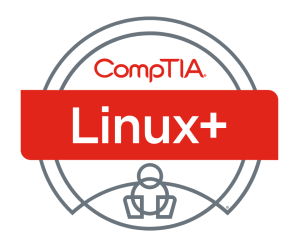OBJECTIVES
In this course, you will configure, operate, and troubleshoot Linux systems.
You will:
- Perform basic Linux tasks.
- Manage users and groups.
- Manage permissions and ownership.
- Manage storage.
- Manage files and directories.
- Manage kernel modules.
- Manage the Linux boot process.
- Manage system components.
- Manage devices.
- Manage networking.
- Manage packages and software.
- Secure Linux systems.
- Write and execute Bash shell scripts.
- Automate tasks.
- Plan and perform a Linux installation
COURSE BREAKDOWN
1. Performing Basic Linux Tasks
1.1 Identify the History and Development of Linux
1.2 Enter Shell Commands
1.3 Get Help Using Linux
2. Managing Users and Groups
2.1 Assume Superuser Privileges
2.2 Create, Modify, and Delete Users
2.3 Create, Modify, and Delete Groups
2.4 Query Users and Groups
2.5 Configure Account Profiles
3. Managing Permissions and Ownership
3.1 Modify File and Directory Permissions
3.2 Modify File and Directory Ownership
3.3 Configure Special Permissions and Attributes
3.4 Troubleshoot Permissions Issues
4. Managing Storage
4.1 Create Partitions
4.2 Manage Logical Volumes
4.3 Mount File Systems
4.4 Manage File Systems
4.5 Navigate the Linux Directory Structure
4.6 Troubleshoot Storage Issues
5. Managing Files and Directories
5.1 Create and Edit Text Files
5.2 Search for Files
5.3 Perform Operations on Files and Directories
5.4 Process Text Files
5.5 Manipulate File Output
6. Managing Kernel Modules
6.1 Explore the Linux Kernel
6.2 Install and Configure Kernel Modules
6.3 Monitor Kernel Modules
7. Managing the Linux Boot Process
7.1 Configure Linux Boot Components
7.2 Configure GRUB 2
8. Managing System Components
8.1 Configure Localization Options
8.2 Configure GUIs
8.3 Manage Services
8.4 Troubleshoot Process Issues
8.5 Troubleshoot CPU and Memory Issues
9. Managing Devices
9.1 Identify the Types of Linux Devices
9.2 Configure Devices
9.3 Monitor Devices
9.4 Troubleshoot Hardware Issues
10. Managing Networking
10.1 Identify TCP/IP Fundamentals
10.2 Identify Linux Server Roles
10.3 Connect to a Network
10.4 Configure DHCP and DNS Client Services
10.5 Configure Cloud and Virtualization Technologies
10.6 Troubleshoot Networking Issues
11. Managing Packages and Software
11.1 Identify Package Managers
11.2 Manage RPM Packages with YUM
11.3 Manage Debian Packages with APT
11.4 Configure Repositories
11.5 Acquire Software
11.6 Build Software from Source Code
11.7 Troubleshoot Software Dependency Issues
12. Securing Linux Systems
12.1 Implement Cybersecurity Best Practices
12.2 Implement Identity and Access Management Methods
12.3 Configure SELinux or AppArmor
12.4 Configure Firewalls
12.5 Implement Logging Services
12.6 Back Up, Restore, and Verify Data
13. Working with Bash Scripts
13.1 Customize the Bash Shell Environment
13.2 Identify Scripting and Programming Fundamentals
13.3 Write and Execute a Simple Bash Script
13.4 Incorporate Control Statements in Bash Scripts
14. Automating Tasks
14.1 Jobs
14.2 Implement Version Control Using Git
14.3 Identify Orchestration Concepts
15. Installing Linux
15.1 Prepare for Linux Installation
15.2 Perform the Installation
Course Facilitators
This course is delivered by highly skilled and experienced Linux Trainers who have attained several CompTIA certifications.

